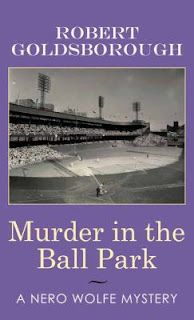Reviewed by Meygan
After the future “war” takes place, the people who
are left are divided up into factions. There is Amity, those who believe in
happiness and peace; Candor, an honest and trustworthy group; Erudite, the most
intelligent group, who believe in brains over brawn; Dauntless, for those who
are risk takers and brave; and Abnegation, the selfless who take care of others
before themselves, including those who are factionless. Because they are
sixteen years old, Beatrice and her
brother Caleb will soon have to decide what faction they will join.
Even though
everyone must take a “test” for faction suggestions, everyone has free will. However,
once a decision is made then that is the final answer. There is no going back.
Those who do not wish to reside in their faction choice will become factionless,
basically homeless. Also, every faction believes “Faction before blood” meaning
that if someone chooses to leave their family and enter into another faction,
then that faction is their new family. Caleb is selfless and goes above and
beyond to take care of others. Beatrice is not selfless and yearns for
something different, a more exciting life. This is why Beatrice feels that
Caleb was made for Abnegation but she is not.
The day has arrived for Beatrice to take her test.
The test is a simulation that places Beatrice in certain scenarios to see how
she would react. Her actions will determine the faction she is best suited for.
However, when the simulation is over, the test administrator, Tori, tells
Beatrice that she is suited for Abnegation, Erudite, and Dauntless. She tells
Beatrice that because she is suited for all three factions, she is Divergent but
to never, ever let anyone know that information. Beatrice is full of question
(What it means to be Divergent is one of the questions), but Tori won’t answer
anything else and she puts Beatrice’s test results as Abnegation.
On the day of the ceremony, Beatrice must make a
decision. She has always admired those who are dauntless—fearless, robust, and
full of life. However, leaving Abnegation means that she no longer gets to be
with her family. Can she handle the guilt of leaving behind her family for a
new life? Is she brave enough for Dauntless? Should she make a choice to pursue
a different kind of happiness, a happiness that doesn’t only revolve around her
family? These are the questions that enter her mind as she is about to make the
most important decision of her life.
I mentioned to a co-worker that I hadn’t read Divergent yet. It had been on my “To Read”
list for quite some time, but it became one of those books that kept getting
shoved to the side. The tone of her voice when she asked, “You haven’t read Divergent yet?” made me realize I needed
to read it NOW. Plus, we tend to like some of the same books so I knew that I
could trust her insight. I love this book! I can’t think of one thing that I
didn’t care for. I found the characters, the plot, the descriptions, the
setting, and the dialogue to be fascinating. Yes, this is not the first dystopian
novel to exist, but I thought it was so well written that I didn’t feel as if I
were reading a rip-off of The Hunger Games or another piece of dystopian
literature.
However, I have been warned that the series becomes
shoddier by each book and I have had several people (including patrons) tell me
that the last book is almost unbearable. I believe that is why I was so
reluctant to begin this series. It’s kind of like when a friend warns you about
someone that you like but shouldn’t and even though you know the relationship
will end badly, you just have to find out for yourself. Oh well. At least this
reader is prepared for the expected heartache.









